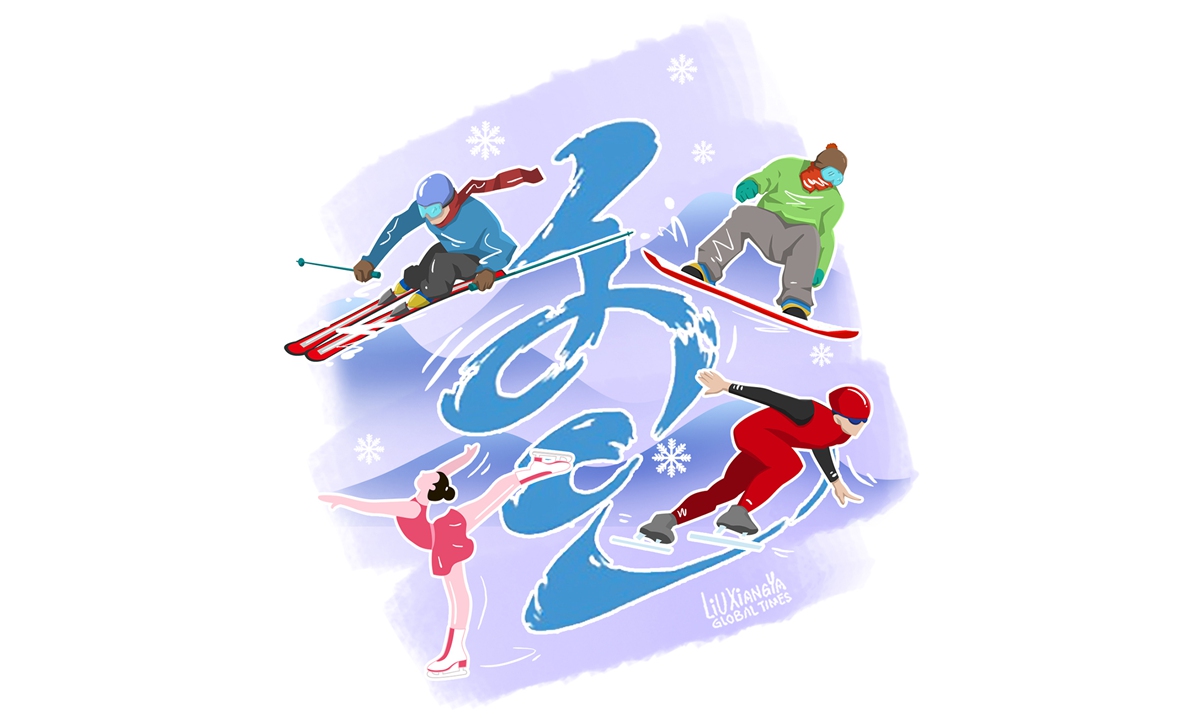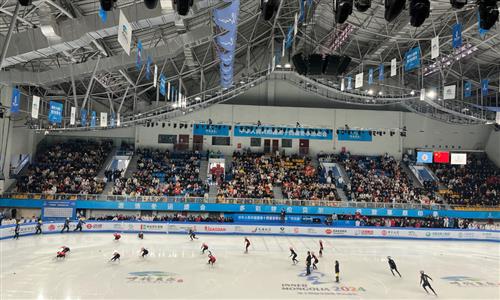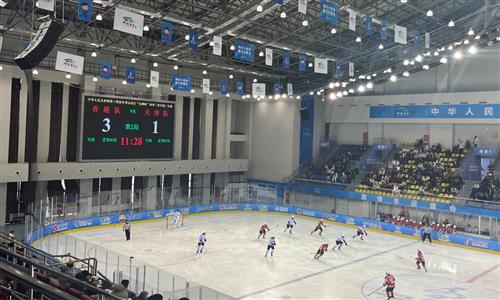ARTS / CULTURE & LEISURE
Winter Games showcases unity, diversity

Illustration: Liu Xiangya/Global Times
As the 14th National Winter Games in Hulunbuir, North China's Inner Mongolia Autonomous Region, draws to a close on Tuesday, they not only leave behind memories of thrilling competitions but also act as an example of the power of sports in fostering unity and celebrating diversity.
This grand event, touted as the largest and most significant comprehensive winter sports event in China after the 2022 Beijing Winter Olympics, has illuminated Hulunbuir's name on the national stage, transforming the region into a bustling hub of sports and cultural activities.
The city's efforts to host the event are evident from the moment one sets foot in the Hailar airport, which is adorned with banners, artwork, and colorful lights promoting the Games. Leveraging its geographical advantage, Hulunbuir has also incorporated the Winter Games theme into its urban landscape through various ice and snow sculptures.
At this Winter Games, over 2,000 volunteers have provided voluntary services in various positions such as reception, etiquette, competition services, security, doping prevention, and venue equipment services, ensuring the smooth running of the event and providing assistance to athletes, spectators, media and staff.
A staff member from the volunteer management office told the Global Times that most of these volunteers are students from local schools, with 90 percent of them being born after 2000.
One of the most remarkable aspects of this edition of the Winter Games is its celebration of cultural diversity. Hulunbuir, home to various ethnic minorities such as the Mongolian, Daur, Evenki, and Oroqen ethnic groups, has integrated its rich heritage into the fabric of the event.
Held on February 17, the opening ceremony featured performances by renowned artists from these ethnic groups, showcasing their traditional music, dance, and art.
The inclusivity of the National Winter Games is further exemplified by the participation of athletes from all corners of China, which witnessed the debut of athletes from regions in the Xizang Autonomous Region, signifying a broadening of the winter sports landscape across the nation.
With over 3,700 athletes participating in the event, it is also the largest of its kind in the history of the National Winter Games.
It's worth noting that Hong Kong sent a delegation with 70 members to the event. With a team of 40 athletes competing in three events - figure skating, men's ice hockey, and alpine skiing - the Hong Kong team is leaving its mark at the National Winter Games for the sixth time since its inaugural participation in 1999.
After defeating teams from Tianjin and Jilin, the Hong Kong youth ice hockey team fell to hosts Inner Mongolia, ultimately failing to advance to the elimination rounds. However, Lau Chun, the head of the Hong Kong delegation, expressed his hopes that support for the Hong Kong team will foster greater interest in winter sports among the special administrative region's youth.
The games include a total of eight major events consisting of 180 disciplines. Among the various disciplines, short-track speed skating emerged as a crowd favorite. With the presence of renowned Olympians such as Wu Dajing and Liu Shaolin, the competition reached new heights, drawing audiences from far and wide to witness the exhilarating races.
Beyond the thrill of competition, the National Winter Games has also ignited a tourism boom in Hulunbuir and the wider Inner Mongolia region. The influx of visitors, drawn by the allure of the Games and the region's scenic beauty, has injected vitality into the local economy, generating substantial revenue.
Gucheng, an ancient town in the Hailar district founded in 1734, has been crowded with visitors in recent days. Since February 14, a series of cultural performances featuring ethnic dances, ice sculptures, and tunes of the Morin khuur (the horsehead fiddle), have been performed every day.
Dong Shi, a performer from the Oroqen ethnic group, told the Global Times that their dance combines elements from the Mongolian, Daur, Evenki, and Oroqen ethnic groups.
There are a total of 31 ice sculptures scattered around the ancient town, made from 5,000 cubic meters of ice, according to De Xuehui, director of the Cultural, Tourism, and Sports Bureau of Hailaer. The designs of these ice sculptures also feature speed skating, skiing, curling, and other winter sports.
The Spring Festival holiday period (February 10 to February 17) witnessed a remarkable surge in tourism, with Hulunbuir attracting a total of 1.67 million visitors and generating tourism revenue reaching 1.144 billion yuan ($158.9 million). These figures represent a 9-fold and 11-fold increase, respectively, compared to the same period in 2023.
The autonomous region has also experienced a boom in winter tourism, with Inner Mongolia welcoming a total of 31.41 million domestic tourists, marking a 5.76-fold increase compared to 2023. The region also generated 221.22 billion yuan in tourism revenue, which is 7.63 times compared to the same period in 2023.
The author is a reporter with the Global Times. life@globaltimes.com.cn


